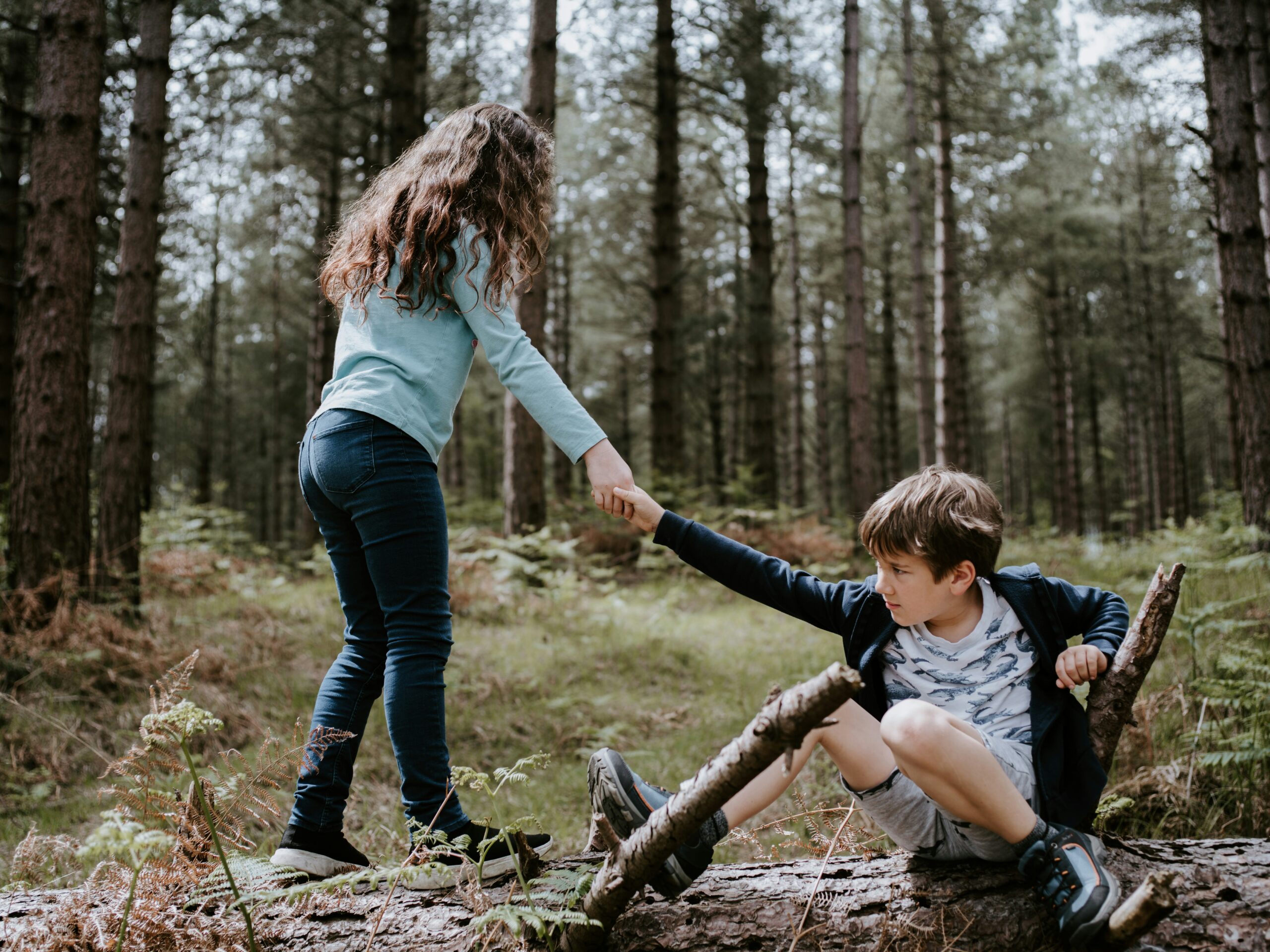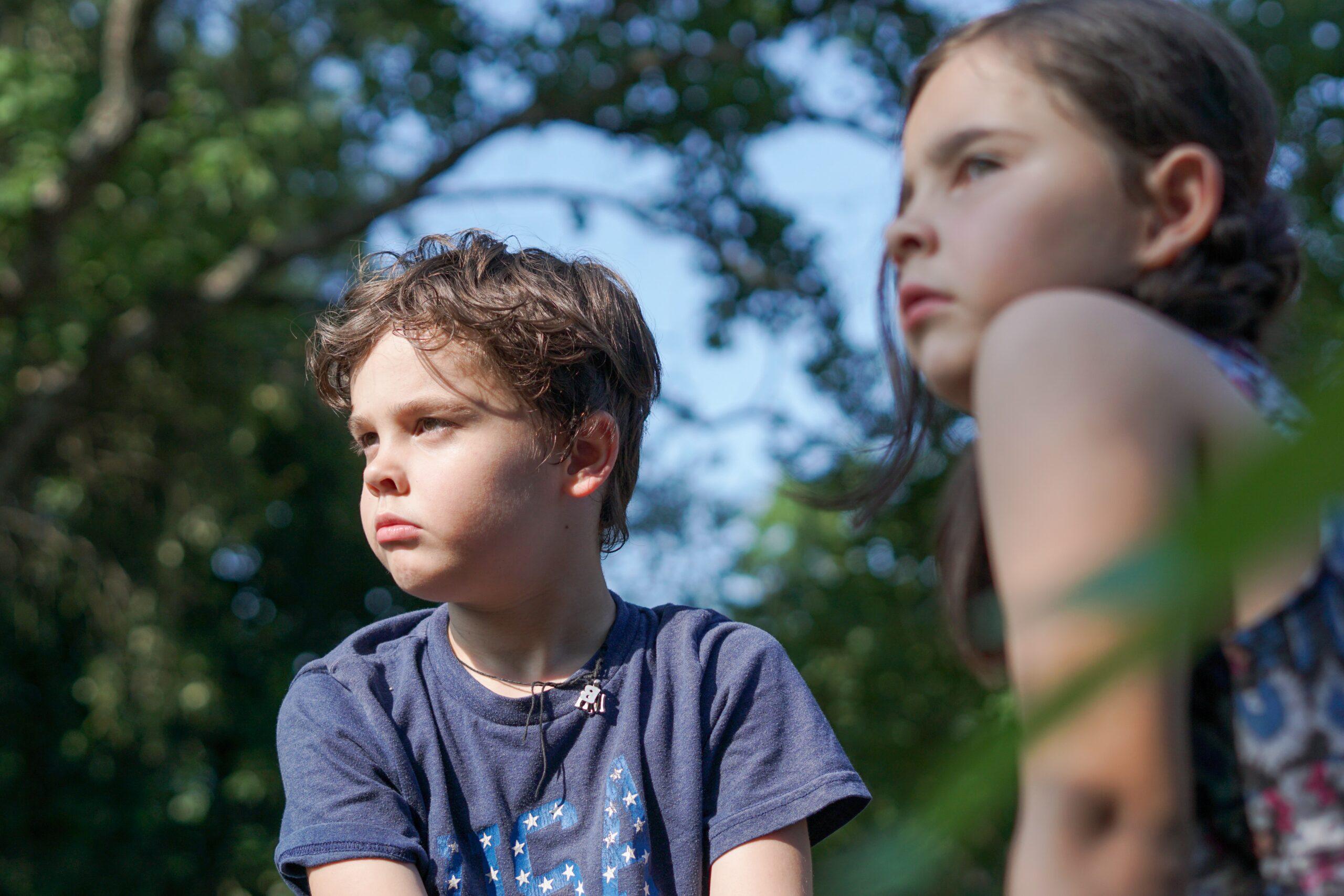You had more or less free reign with your first child, but by the advent of number two you’re unsure what happened to your sense of control or the family peace. These days, it seems your children only embrace in photographs or your dreams of years far down the road when you see the siblings, as adults, aware of how much they need and love each other. This knowledge that you are, in fact, creating such a support system might help you through some of the upheavals facing you now as your children incessantly argue.
The following is only an example and may not apply in your situation: Child number two is dominated by her predecessor. The domination of the first-born child over the second-born arrival might naturally be perceived by the parents as aggression. But in actuality, it is just animal kingdom hierarchy, something that number two happily accepts, knowing no other way. While the parents presume a status of equality between their children— indeed, the way they want to treat their kids— the children continue merrily on in their superior versus inferior positions. Thus, number two expects to be knocked about more by number one than she herself knocks number one, and number one expects number two to do whatever the first-born child says.
A harsh interpretation of sibling behavior may be unfair, though monitoring it is necessary. Giving number one the benefit of the doubt when a tap looks suspiciously like a jab, it is better to say to your first-born child, “She doesn’t like that game, don’t do it,” than to accuse the older child of an aggression she may not be guilty of, at least knowingly. Stop her but do not shame her. Your child’s actions are more likely to arise from confused feelings.
Shame and Blame is Not the Game
It is difficult to keep these concepts in mind when you are naturally protective of the more physically helpless child. After all, younger siblings seem vulnerable in the eager hands of their siblings who are anxious to embrace them. Even babies seem nervous about their older siblings’ endearments.
However, despite the usurpation of one’s lone place in the sun, the first-born child harbors a protective feeling of her younger sibling. This protective feeling may be an outgrowth of observing a parent’s nurturing actions toward the baby or an instinctive perception of the baby’s helplessness. Either way, it is this older sibling’s desire to watch over the baby that you must build on while firmly stopping but not shaming the older sibling’s attacks. Because young children mimic what you do and say— their way of learning most things— you have the reigns to guide your child’s actions. Giving a special new doll to the older child and showing her how to take care of that baby while you take care of yours gives you an opportunity to demonstrate lots of good things, like gentle hugs and pats. It also provides an opportunity for praise, which is especially needed when number one feels edged to the benches as second string.
A Plea for Physical Contact
There are times, particularly when a younger sibling is on the scene, that your child raises a hand to you and sometimes socks you right in the leg or stomach (depending on how high he or she can reach). Admittedly, kids are not supposed to do this and are instructed accordingly, commonly by a yelp by the parent who was just slugged. But the impetus for the child’s strike is sometimes an expression for physical contact. In the only graceful way the child knows, the sibling may be asking for a hug. Just remember, it is easy to pick up this child and hug him or her or to delicately spin the child in your arms, even while explaining that hugs are good and hitting is not good.
Siblings often hit each other out of a similar impetus, a desire for physical contact. (As do preschool playmates and grade schoolers, among whom a push, shove or kick are forms of physical communication.) A sibling’s “hug” can sometimes hide a “hit” as well, but for essentially the same reasons: an urge for contact and mastery over a bewildering situation. Thus, between young siblings, a simple demonstration and statement, “She would rather be hugged like this than like that,” and inviting the older child to do as you do, might prove effective.
Hugs that hide a hit need patient understanding, but so do hits that hide a hug. Miscalculating this need for tender physical reassurance might cause you to severely punish the offending child at the very moment the child most craves reassurance. And that will inevitably lead to resentment and hits that have no hugs inside them.




